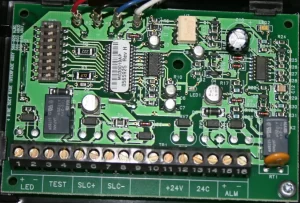Introduction: The Connectivity Imperative in Industrial IoT
In the rapidly evolving landscape of Industrial Internet of Things (IIoT), reliable and efficient wireless connectivity is no longer a luxury—it’s a necessity. Factories, smart grids, and automated supply chains demand Wi-Fi solutions that balance performance, power efficiency, and scalability. Amid a crowded market of chipsets, the choice between Qualcomm’s IPQ4019 and IPQ4018 exemplifies the nuanced decision-making required for IIoT deployments. This article explores the technical distinctions between these two popular platforms, evaluates their suitability for industrial applications, and provides actionable insights for engineers and decision-makers navigating this critical selection process.
Understanding the Core Requirements of IIoT Connectivity
Industrial environments pose unique challenges: extreme temperatures, electromagnetic interference, and the need for uninterrupted data transmission. Unlike consumer-grade Wi-Fi, IIoT solutions must prioritize:
- Latency Sensitivity: Real-time control systems require deterministic communication.
- Power Efficiency: Battery-operated sensors in remote locations need long operational lifespans.
- Network Density: Factories with hundreds of connected devices demand robust handling of concurrent connections.
- Security: Protection against cyber threats is non-negotiable for critical infrastructure.
These factors make chipset selection a high-stakes endeavor. The IPQ4019 and IPQ4018, both quad-core System-on-Chips (SoCs) from Qualcomm, cater to these needs but differ in ways that significantly impact IIoT use cases.
IPQ4019 vs. IPQ4018: Breaking Down the Technical Divide
1. Processing Power and Architecture
The IPQ4019 integrates a quad-core ARM Cortex-A53 CPU clocked at 717 MHz, paired with a dedicated network acceleration engine. This architecture excels in handling complex tasks like packet prioritization and encryption/decryption without bottlenecking the CPU. In contrast, the IPQ4018 employs a slightly older Cortex-A7 design, offering lower clock speeds (650 MHz) and reduced parallel processing capabilities. For IIoT applications involving edge computing or real-time analytics, the IPQ4019’s advanced cores provide a tangible advantage.
2. Wireless Specifications
Both chips support dual-band Wi-Fi (2.4 GHz and 5 GHz) with 802.11ac Wave 2 standards, but the IPQ4019 supports higher modulation rates (1024-QAM vs. 256-QAM on the IPQ4018). This translates to a 25% increase in theoretical throughput—critical for bandwidth-heavy applications like video monitoring in smart factories. Additionally, the IPQ4019’s MU-MIMO (Multi-User, Multiple-Input, Multiple-Output) technology enhances performance in dense deployments, a common scenario in IIoT environments.
3. Peripheral and Interface Support
The IPQ4019 includes support for USB 3.0, PCIe Gen 2.0, and SDIO 3.0 interfaces, enabling seamless integration with industrial-grade sensors, gateways, and legacy systems. The IPQ4018, while still versatile, lacks USB 3.0 compatibility, limiting its utility in setups requiring high-speed data transfer from external devices.
4. Power Consumption and Thermal Management
Industrial settings often lack controlled cooling systems. The IPQ4018’s lower thermal design power (TDP) makes it suitable for passive cooling environments or applications where energy efficiency trumps raw performance. However, the IPQ4019’s dynamic frequency scaling allows it to throttle power usage during low-demand periods, narrowing the efficiency gap.

Choosing the Right Fit: Scenarios and Trade-Offs
When to Opt for the IPQ4019
- High-Throughput Applications: Automated quality control systems using machine vision cameras benefit from the chip’s superior data rates.
- Edge Computing Needs: Factories leveraging on-device AI for predictive maintenance require the IPQ4019’s processing muscle.
- Future-Proofing: Organizations planning to scale their IIoT networks or adopt emerging standards like Wi-Fi 6E will find the IPQ4019’s advanced feature set more adaptable.
When the IPQ4018 Shines
- Cost-Sensitive Deployments: For monitoring systems with basic data logging requirements, the IPQ4018 offers a budget-friendly option without over-engineering.
- Low-Power Environments: Solar-powered agricultural sensors or remote oil rig monitors prioritize longevity over speed, making the IPQ4018’s efficiency a better fit.
- Legacy System Integration: Facilities using older machinery with limited interface options can leverage the IPQ4018’s compatibility with slower communication protocols.
Beyond Hardware: Software and Ecosystem Considerations
Chipset selection isn’t solely about silicon capabilities. Qualcomm’s SDK support, third-party driver availability, and community troubleshooting resources play pivotal roles. The IPQ4019 benefits from a more active developer ecosystem due to its adoption in enterprise and carrier-grade hardware. However, the IPQ4018’s maturity ensures stable firmware and a wealth of documentation—a boon for teams with limited R&D bandwidth.
Security is another critical layer. Both chips support WPA3 encryption, but the IPQ4019’s hardware-accelerated TLS/SSL offloading enhances performance in encrypted data environments. For industries like utilities or healthcare, this feature alone may justify the higher upfront cost.

Leave a comment